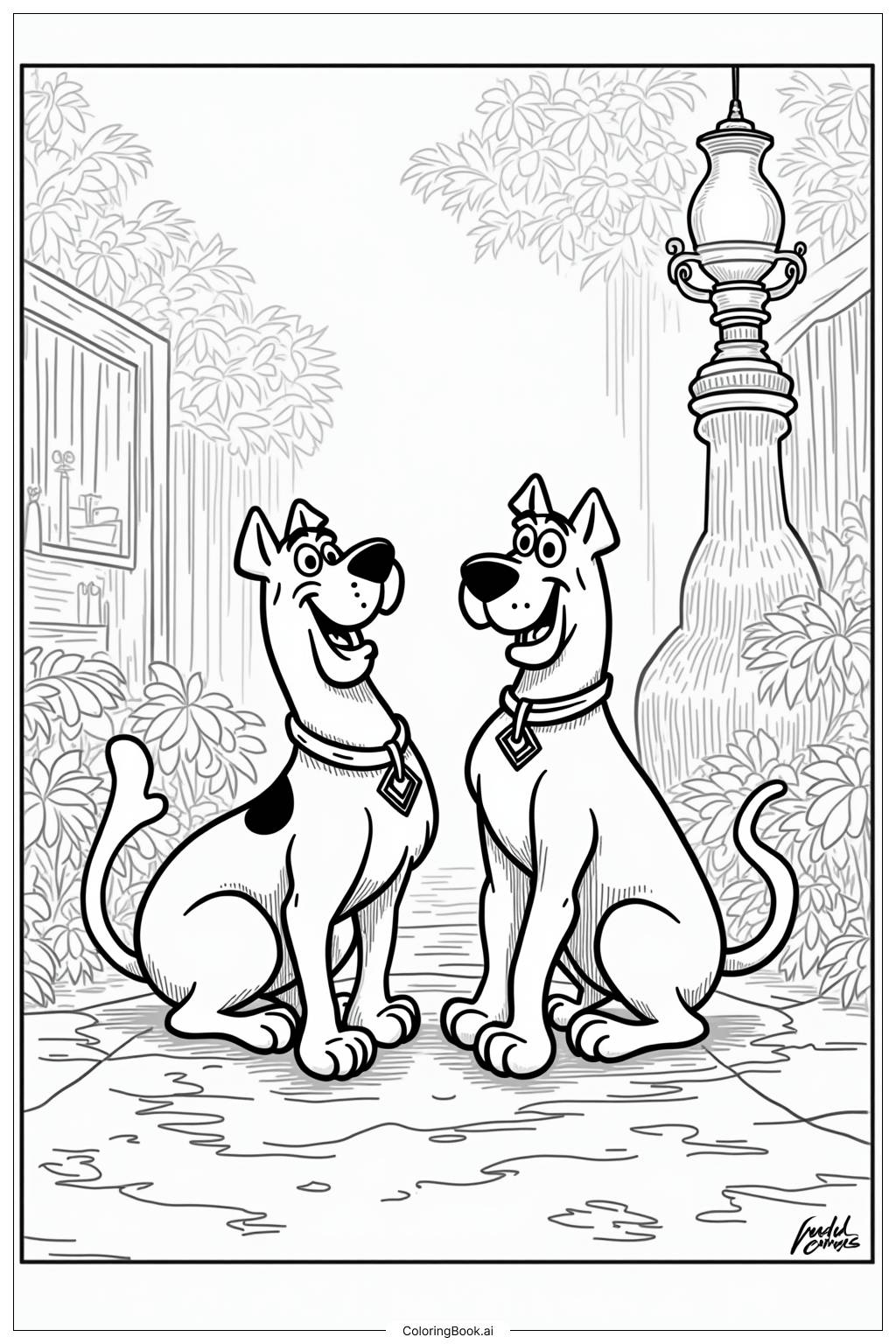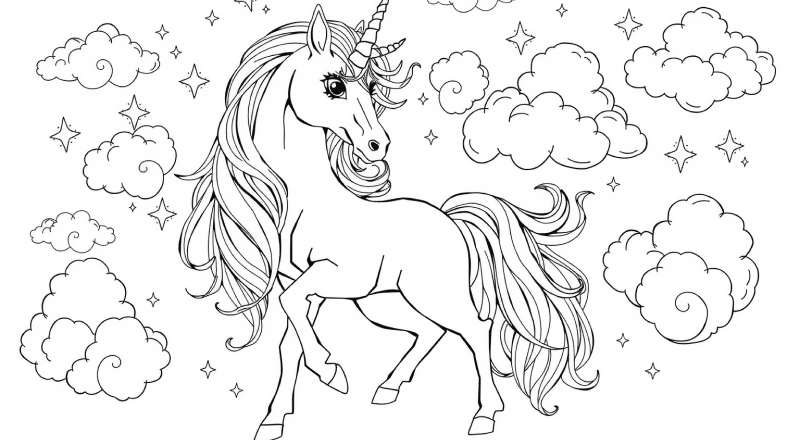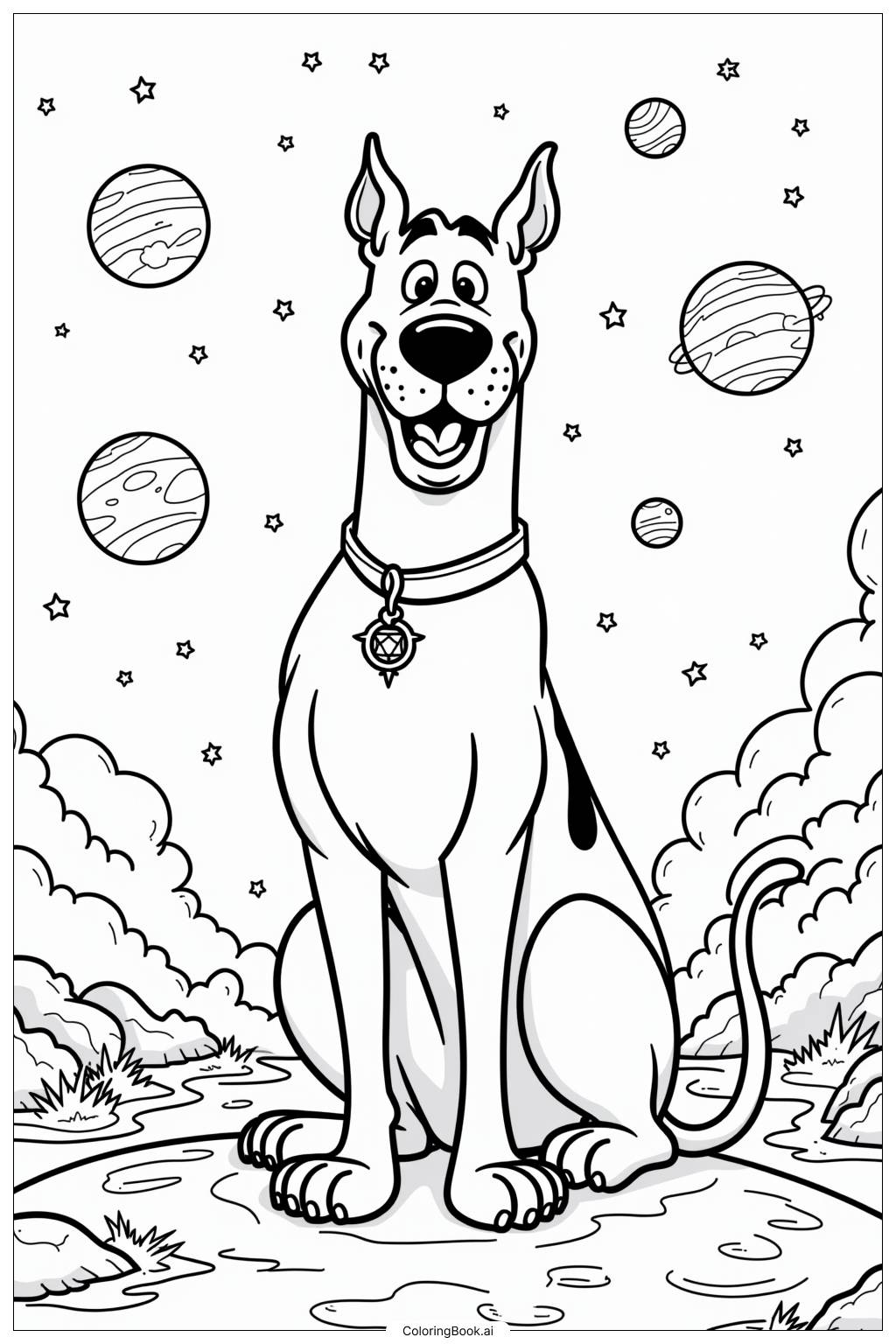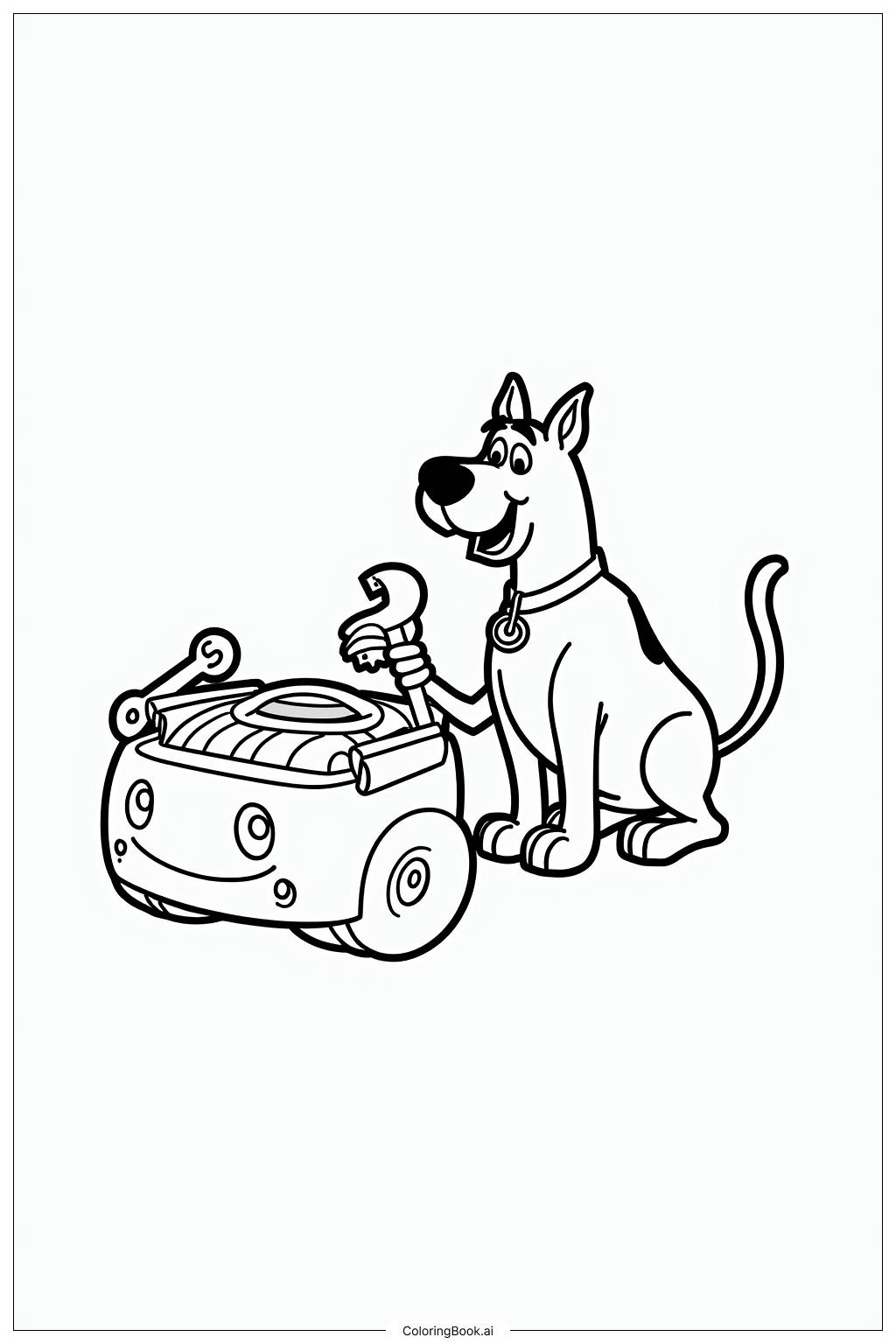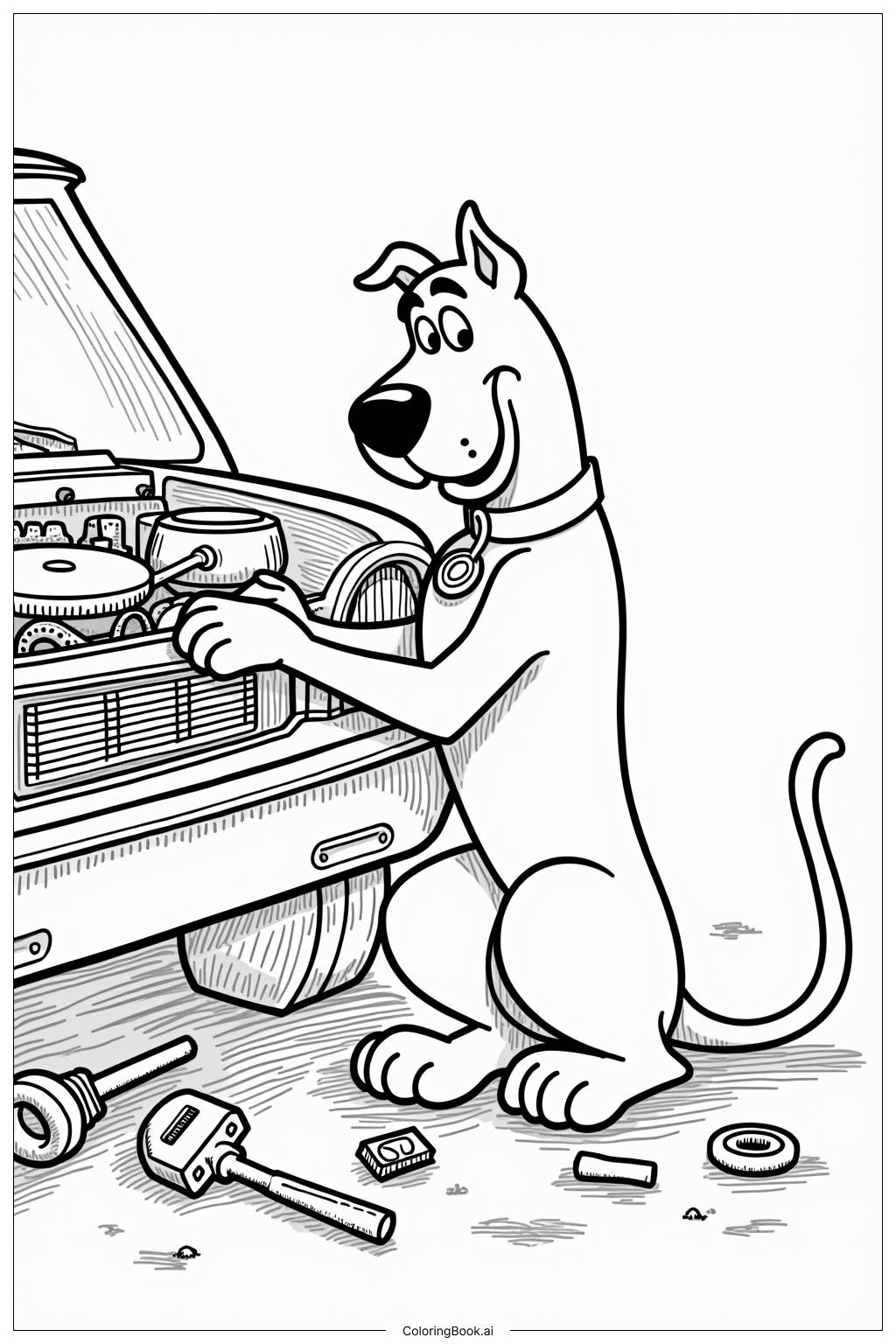Coloring tips: How to color Scooby Doo Stoner Lava Lamp Silhouette coloring page well?
When coloring Scooby-Doo, consider using shades of brown for his fur. A dark brown for the spots will add depth. For Shaggy, light brown or beige works well. Use bright colors for the background plants and the lava lamp to create contrast. Don’t forget to add some color to the path they are sitting on! You can use different greens for the leaves, adding shades for more dimension. Experiment with glittery or metallic colors for the lava lamp to make it shine.
Coloring challenges: Which parts are difficult to color and need attention for Scooby Doo Stoner Lava Lamp Silhouette coloring page?
1. Shades of Brown: Coloring Scooby-Doo can be tricky because of his various shades of brown. It can be challenging to get the right tones, especially around his spots. Use blending techniques to create a smooth effect. 2. Background Details: The intricate leaves and plants in the background may be detailed, which can make it difficult for younger children to color neatly. They may struggle with staying within the lines. 3. The Lava Lamp: The lava lamp has curved shapes and patterns that can be difficult to fill in. Using multiple colors can confuse some kids, so guidance may be needed. 4. Layering Colors: To make the pictures pop, it’s good to layer colors. This can be harder for kids to master, but it shows great results! They need to learn about layering light and dark shades together.
Benefits of coloring books: Advantages of drawing Scooby Doo Stoner Lava Lamp Silhouette coloring page
Coloring this Scooby-Doo scene has several benefits. First, it helps improve fine motor skills. Children will practice holding crayons or markers and develop their hand coordination. Second, it enhances creativity. Kids can choose their colors and make the picture unique. This boosts their imagination! Third, coloring can be a calming activity, providing a moment of relaxation. It can help reduce stress and anxiety, allowing children to focus on something fun. Finally, it encourages attention to detail. By closely examining the picture, they learn to appreciate small features, like Scooby’s spots or the different plants.
